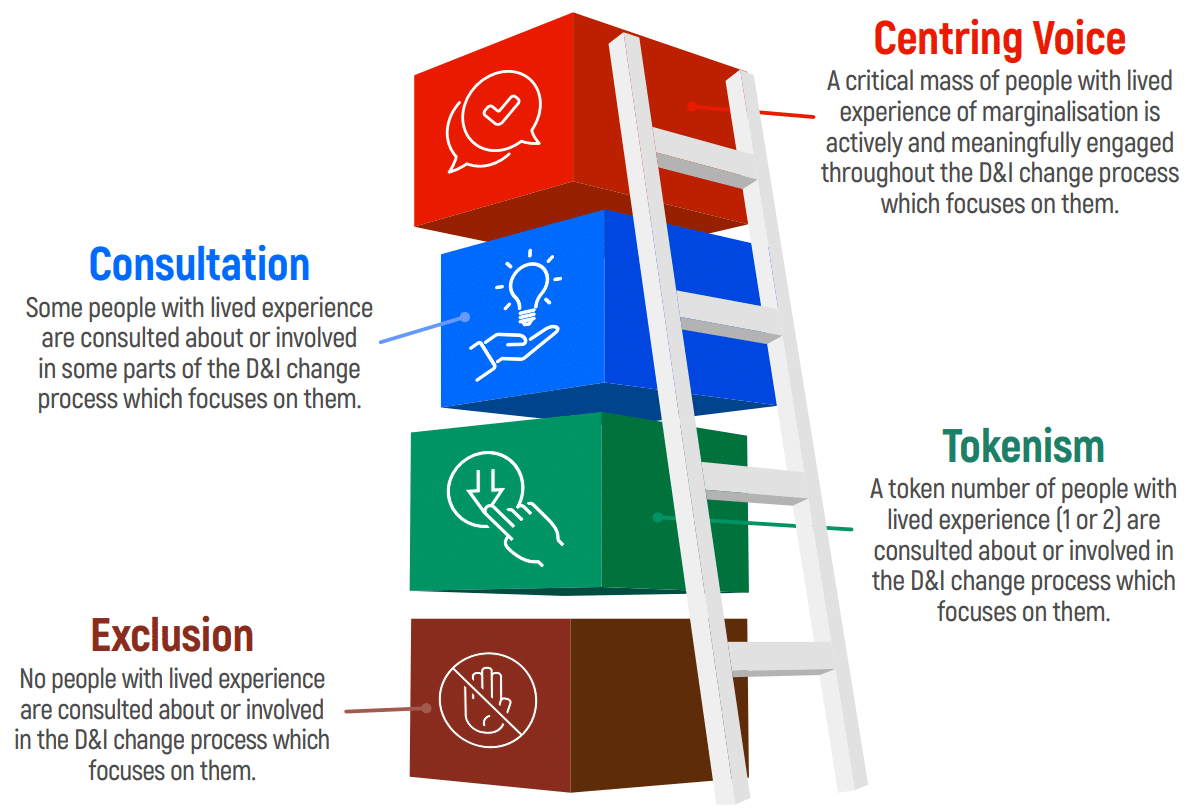Lessons from DCA's Culturally and Racially Marginalised (CARM) Women in Leadership research
DCA has created a new comprehensive guide on centring marginalised voices at work. This is a practical guide that clarifies what it is to centre voice and why this is important – and provides a step-by-step guide to how organisations can do this.
To create the guide, we drew on the learnings of DCA’s 2023 research report, “Culturally and Racially Marginalised Women in Leadership” and developed a robust how-to guide that can be applied to centre the voices of any marginalised group of people.
What does ‘centring voice’ mean?
Centring voice means we listen to and prioritise what marginalised people are telling us about the systemic barriers they face – and, importantly, ensure these perspectives are the foundation on which we build D&I initiatives focused on them.
“[Having my voice centred means] being heard holistically and intersectionally, instead of being sliced up into sections… [like ‘woman’, ‘CARM person’ and so on].”
‘Centring voice’ is not…
Often people confuse centring voice with consultation or tokenism. But centring voice is very different – as our ladder image below illustrates.

“To have these mindset shifts about culturally and racially marginalised women… you’re not going to suddenly have the HR person who’s of Anglo background really understand what’s impacting you [as a CARM woman], or the Managing Director, or the CEO, or whoever it is. They don’t understand because they don’t know.”
Why centring voice is crucial for successful D&I change
Centring the voices of people with lived experiences of marginalisation ensures a more comprehensive understanding of systemic barriers and how to address these – meaning D&I change is more likely to be effective.
Identify systemic inequities
Inform your approach by centring the voices of people with lived experience of marginalisation, who are more likely to identify more subtle and systemic forms of workplace inequities, or the risk of these arising.
Avoid perpetuating harmful barriers
Harness the benefits of practical advice on organisational strategies and policies for equity and inclusion – which avoids perpetuating harmful biases, stereotypes and barriers.
Lived experiences form the foundation
Ensure the experiences of marginalised people are accurately reflected in organisational policies, initiatives, and strategies, and form the foundation of workplace change initiatives which focus on them.
Diverse perspectives for new thinking
Enrich D&I work with diverse perspectives shaped by the unique experiences, backgrounds, and challenges of people with lived experiences of marginalisation to allow new thinking to emerge within the organisation.
“I’d like not to be the token ‘Black’ woman for the sake of a company marketing campaign. It doesn’t happen to me, but I have seen this happen to others who may look more ‘Black’.”
The missing piece: a practical framework
The Centring Marginalised Voices at Work guidelines provide in-depth information and practical steps to centring voice in organisations. The guide encompasses:

What ‘centring voice’ means and why it matters

4-step collaborative process for centring marginalised voices

How individual employees can centre marginalised voices

Reflective questions for organisations about centring voice
Member-only content
Gain full access with DCA membership!
If your organisation has just signed up, your access will be activated as soon as payment is received.
